
Laughing Water pastured meat
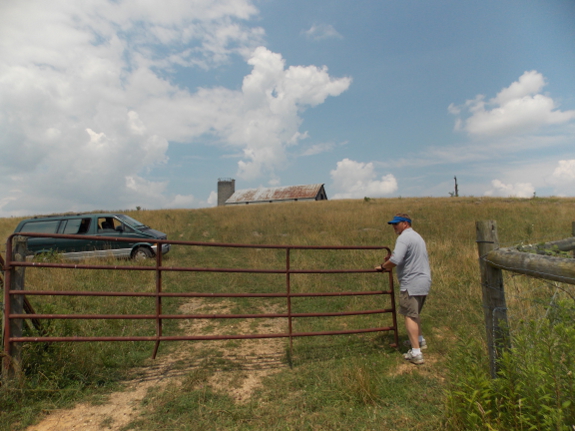
Mark and I decided my book-advance check should go to a worthy cause --- buying pastured beef for the freezer!* But where would we find the meat? Our pastured-lamb producers don't raise cows for sale, so we downloaded the huge Local Food Guide from 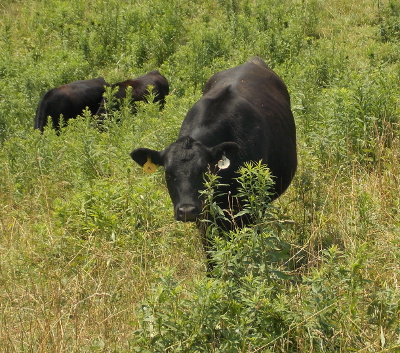 the sidebar of this website.
Next, I read all of the farm descriptions of pastured-beef producers
within an hour-and-a-half drive of our homestead, I skipped the ones who
didn't list an email address (yes, I hate the phone), and then I
quickly narrowed down our options to one top choice --- Laughing Water Farm in Marion, Virginia.
the sidebar of this website.
Next, I read all of the farm descriptions of pastured-beef producers
within an hour-and-a-half drive of our homestead, I skipped the ones who
didn't list an email address (yes, I hate the phone), and then I
quickly narrowed down our options to one top choice --- Laughing Water Farm in Marion, Virginia.
What was the appeal of
Laughing Water over the other options? Antoinette Goodrich manages
Laughing Water Farm as a healthy ecosystem, keeping her cattle on grass
year-round, stockpiling winter pasture,
and also putting away some hay. The only supplements she feeds
her cows are sea salt and kelp, and one look at the farm was enough to
prove that Antoinette has the animal equivalent of a green thumb.
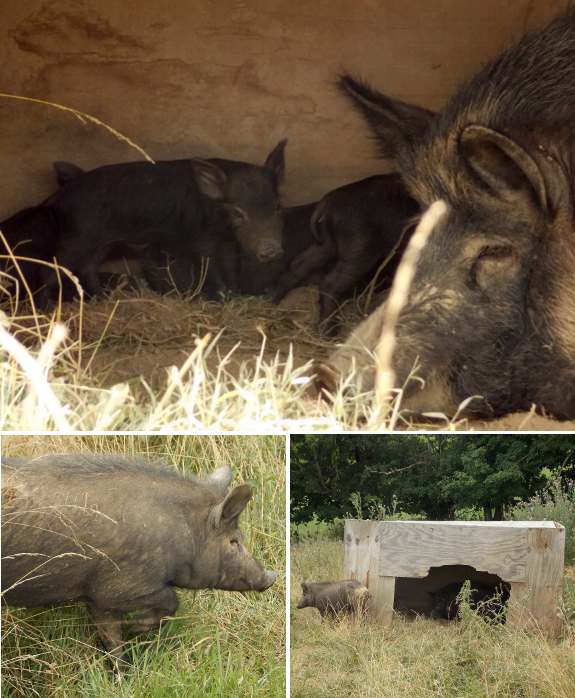
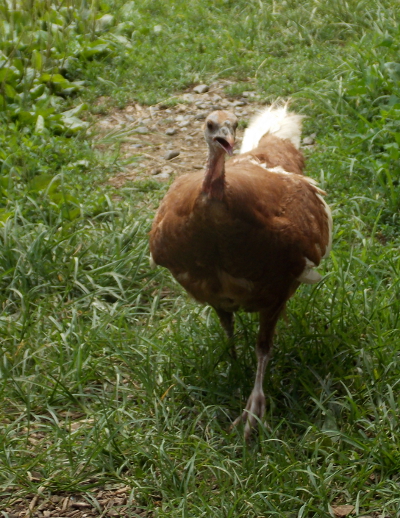 With
over 200 acres to play with, Antoinette has room for more than the 40
head of cattle (plus their calves) that she raises to turn into pastured
beef. She stocks Ossabaw pigs too, a heritage breed that was
abandoned by sailors on an island off the coast of Georgia. Over
the decades that the pigs lived on their own, they turned into strong
specimens well able to thrive on pasture. Granted, an Ossabaw pig
may take a year or more to reach slaughter weight (and that weight is
much less than that of huge modern breeds), but for Antoinette, the
hardy pigs are worth the wait.
With
over 200 acres to play with, Antoinette has room for more than the 40
head of cattle (plus their calves) that she raises to turn into pastured
beef. She stocks Ossabaw pigs too, a heritage breed that was
abandoned by sailors on an island off the coast of Georgia. Over
the decades that the pigs lived on their own, they turned into strong
specimens well able to thrive on pasture. Granted, an Ossabaw pig
may take a year or more to reach slaughter weight (and that weight is
much less than that of huge modern breeds), but for Antoinette, the
hardy pigs are worth the wait.
We only spent about an
hour on the farm, so there's probably much, much more to Laughing
Water's farm-diversity story. But I should mention that there were
also lots of free-range turkeys, ducks, and chickens, plus experiments
in no-till gardening, and some great-looking tomato hoop houses.
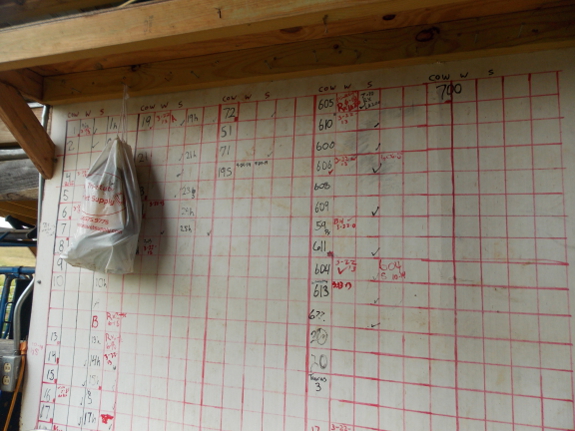
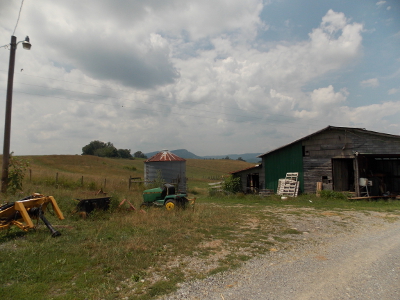 And
excellent record-keeping! The chart above shows every medication
that's been administered to the cows on the property. Besides
worming and immunization, the only problem that has required treatment
was pink eye in a single cow. Antoinette noted that she will
treat cows in a scenario like that because she doesn't want the animals
to be in pain, but the pink-eye-treated cow wouldn't end up in a
customer's freezer.
And
excellent record-keeping! The chart above shows every medication
that's been administered to the cows on the property. Besides
worming and immunization, the only problem that has required treatment
was pink eye in a single cow. Antoinette noted that she will
treat cows in a scenario like that because she doesn't want the animals
to be in pain, but the pink-eye-treated cow wouldn't end up in a
customer's freezer.
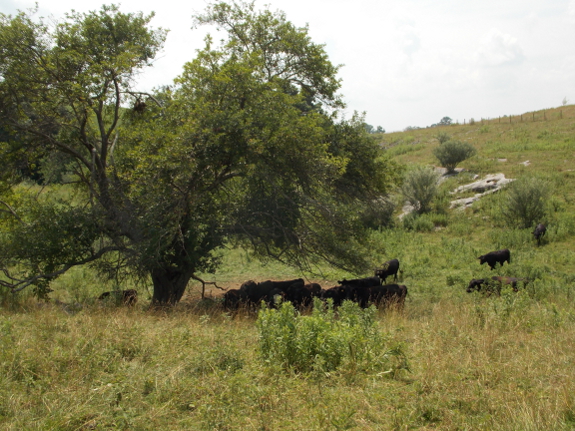
Our one mistake during
our visit to Laughing Water Farm was getting the meat out of the freezer
before we started our tour. As a result, by the time we reached
the cattle, I knew we shouldn't leave our precious haul to thaw in the
heat much longer. But we did stay long enough to learn about the
extensive infrastructure, including self-watering stations 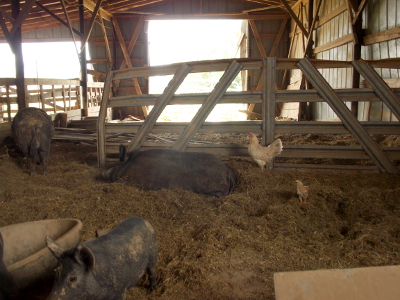 designed
to keep the liquid close enough at any given time so that individual
cows will seek out hydration without waiting for the lead cow to bring
the herd to water. There are permanently fenced pastures, through
which cows are moved at a rate of about two paddocks per week, and we
could tell that the cattle were very happy since most were still out
grazing rather than lazing under the shade tree despite the summer
heat. (The pigs, on the other hand, chose to spend a bit more time
in the barn.)
designed
to keep the liquid close enough at any given time so that individual
cows will seek out hydration without waiting for the lead cow to bring
the herd to water. There are permanently fenced pastures, through
which cows are moved at a rate of about two paddocks per week, and we
could tell that the cattle were very happy since most were still out
grazing rather than lazing under the shade tree despite the summer
heat. (The pigs, on the other hand, chose to spend a bit more time
in the barn.)
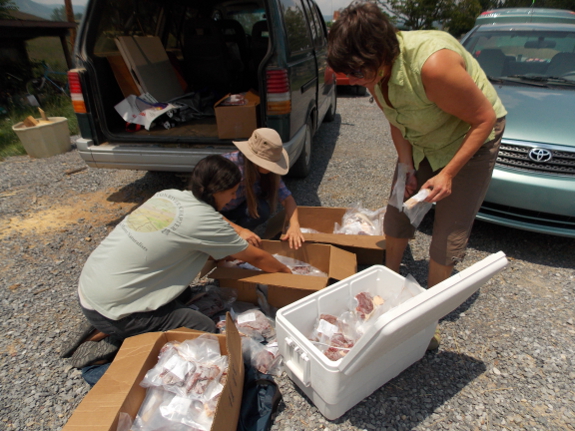
The other thing I might
have done differently is to alert Antoinette that my sister and I were
going to split the half of a cow fifty-fifty. We had to separate
the meat a piece at a time, trying to give us each an equal number of
each cut. Antoinette was very helpful in suggesting equivalent
cuts for parcels that didn't come out even, but I don't recall the exact
details (just that Dani got the oxtail and I got the brisket).
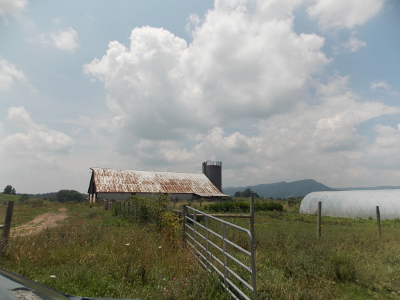 The
final cost was $661.25 for each quarter of the cow. While that
price tag is a bit more than some suppliers I've found, Laughing Water
Farm clearly produces pastured cows that are head and shoulders above
the competition, so I consider the price very fair. In addition,
although I didn't do the math this time around, I'm guessing that even
this "high" price per quarter comes out to be cheaper than buying the
same quantity of much-lower-grade, grain-fed meat a pound or two at a
time at grocery-store prices.
The
final cost was $661.25 for each quarter of the cow. While that
price tag is a bit more than some suppliers I've found, Laughing Water
Farm clearly produces pastured cows that are head and shoulders above
the competition, so I consider the price very fair. In addition,
although I didn't do the math this time around, I'm guessing that even
this "high" price per quarter comes out to be cheaper than buying the
same quantity of much-lower-grade, grain-fed meat a pound or two at a
time at grocery-store prices.
Antoinette brings her
wares to the Abingdon Farmer's Market every week, and serious WWOOFers
are welcome to come learn at her farm. Or you can buy the other
half of my cow, which I believe is still available, and enjoy an
excellent and educational farm tour in the process. Stay tuned for a later post with a taste test of our freezer full of beef!
*Yes, that does mean (that if you use the transitive property) I technically plan to eat my words....
Want more in-depth information? Browse through our books.
Or explore more posts by date or by subject.
About us: Anna Hess and Mark Hamilton spent over a decade living self-sufficiently in the mountains of Virginia before moving north to start over from scratch in the foothills of Ohio. They've experimented with permaculture, no-till gardening, trailersteading, home-based microbusinesses and much more, writing about their adventures in both blogs and books.
Want to be notified when new comments are posted on this page? Click on the RSS button after you add a comment to subscribe to the comment feed, or simply check the box beside "email replies to me" while writing your comment.

Buon appetito! It sounds like they raise their cows much like we do ours and that price is in the right ballpark.
The meat is probably scantily marbled compared to commercially produced beef, so, if they didn't warn you about cooking: under cook it! If any fat winds up in the pan, then there's none left in the meat and it will turn out like shoe leather. OTOH- if you cook it right, you'll be spoiled and will never be able to eat store-bought beef again.
Doug and I talked about this in the car on the way to work this morning. We're avowed carnivores, and when I've tried to cut back on meat consumption, it's been met with resistance (and slight pouting LOL!). So, for our family of two (and a half =D), we buy the following each month: 1) From Food City, their "five for $20" deal, where we pick out a variety of beef (flank steaks, and thinner cuts) and pork chops and each is $4 when you buy all five, each is just under a pound, but perfect for a meal for two adults)
2) From Sams (which I hate because of all of Wal-mart's practices, but while I'm the second on my mom's card, I may as well get the benefit of the pricing) we get 5 lbs of ground beef, approximately $15 (about a dollar and half cheaper than Food City).
3)Also from Sams, 5-6 lbs of chicken breasts for around. Also, cheaper than FC, but I can't remember by how much, so we'll call it $2 a lb.
So, doing all the math, we've got approximately $45 a month. (This might be high, since we don't go through all of the Sam's meat in one month, more like a month and a half, but the math is easier.) For one year, all our unprocessed beef, pork, and poultry needs are right at $540.
(I'm not sure how to count ham and turkey slices for our packed lunches, nor the pepperoni we buy four or so times a year when we make homemade pizza for special occasions. Every once in a great while I'll buy sausage for a special recipe, but other than that, all of our meat is unprocessed.)
I'm sure you're probably getting more total pounds of meat, and better cuts to boot, though. Also, we as yet have no way to store a half a cow, our tiny apartment doesn't have room for a deep freezer!